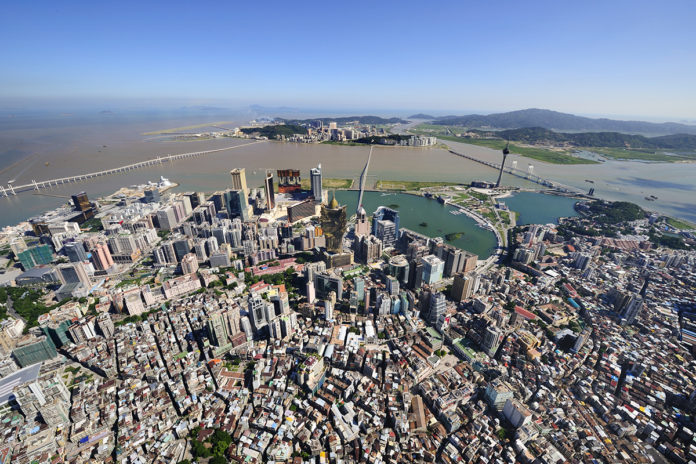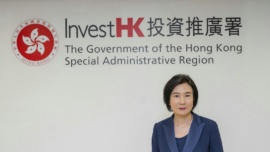Macau’s “fund for the future” has averaged returns that barely outstrip the inflation rate over the past nine years, owing to the Monetary Authority of Macau’s (AMCM) conservative investment strategy. It is a wake-up call, now that the government is setting up a new fiscal reserve fund, also to be managed by the Monetary Authority. After the authority took charge of the reserve fund in April 2000, the fund achieved an average annual return of 2.21 percent between 2001 and 2009, while the average annual inflation rate in the same period was 2.19 percent. In the past, the fund “has been managed as if it was a general deposit, but following a more conservative strategy,” said Samuel Huang Guihai, associate professor at the Macau Polytechnic Institute. The authority favours holdings “in AAA or AA rated debt instruments issued by government agencies and supranational issuers. Those are low-risk investments – that also explains the low return rate,” Mr Huang wrote in an article about Macau’s reserves management published earlier this year. The fund finished 2009 with holdings of MOP12.8 billion (US$1.6 billion), after a net income of MOP426.4 million for the year. That represents a 3.44-percent rate of return, the first annual result since 2003 that was above the annual inflation rate. The inflation rate last year was 1.17 percent. Bad studentBetween 2001 and 2008 the fund posted an average annual return of 2.06 percent, well below the average annual inflation rate for the same period of 2.32 percent. In contrast, from 1999 to 2007 the rate of return of fiscal reserve assets held by Hong Kong’s Exchange Fund averaged 6.8 percent, while the average inflation rate there was 1.2 percent, according to a study by Jay W. Pao of the Statistics and Survey department at the Monetary Authority. Singapore’s fund also outperforms inflation. The Government Investment Corporation was established in 1981 to maintain the purchasing power of Singapore’s substantial reserves, including fiscal reserves and foreign exchange reserves. By the end of March last year, its 20-year nominal annual real rate of return above an international measure of inflation was 2.6 percent, down from 4.5 percent a year earlier owing to the international financial crisis. The corporation’s portfolio suffered a loss of more than 20 percent in Singapore dollar terms in that period. One good yearAccording to the Macau Monetary Authority’s annual report, “while official interest rates in the developed world stayed at historically low levels throughout 2009 and consequently led to a minimal money-market return in aggregate, the fixed-income portfolio under management ended up with a decent yearly performance as a result of a dynamic asset-allocating process,” boosting the reserve fund’s performance. Foreign exchange exposure also contributed to the fund’s growth last year as the US dollar weakened against most other major currencies. Also performing well was the externally managed portfolio; the authority invests part of the reserve fund in external funds. “Against a background of broad-based credit-spread tightening and generally low-interest-rate setting, the external fund managers succeeded in presenting an annual result above the benchmark and achieved a generous positive return in absolute terms,” the authority said in its report. “In the realm of management of exchange reserves and the MSAR reserve fund, and in view of the turbulent international markets, which affected the trends of major currencies, debts, equities and interest rates, the Monetary Authority insisted on a prudent investment strategy in reserve management,” wrote in the report the authority’s chairman, Anselmo Teng. A stash with historyMacau’s reserve fund was set up under the Sino-Portuguese Joint Declaration in 1987. It was then known as the land fund. The declaration succinctly states that “from the entry into force of the Joint Declaration until 19 December 1999, all incomes obtained by the Portuguese Macau government from granting new leases and renewing leases shall, after deduction of the average cost of land production, be shared equally between the Portuguese Macau government and the future government of the Macau Special Administrative Region.” With the establishment of the Macau SAR, the assets of the land fund were handed over to the government. The fund had MOP10.2 billion (US$1.3 billion) under management when the Monetary Authority assumed its management in April 2000, and this increased to MOP10.53 billion by the end of that year. By the end of last year, the fund amounted to MOP12.8 billion. Major revamp comingAlthough the reserve fund is a form of fiscal reserve, no regular capital injection into the fund has been made since the handover from Portuguese rule. The fund does not include either retained budget surpluses or the foreign exchange reserves, but this is set to change. The government has announced that the long-awaited fiscal reserve system law proposal will be sent to the Legislative Assembly by the end of this year. The reserve fund and accumulated budget surpluses amounting to more than MOP100 billion (US$12.5 billion) at the end of last year (excluding those of public autonomous agencies) will be used to establish the system, to be managed by the Monetary Authority. According to Secretary for the Economy and Finance Francis Tam Pak Yuen, the system will have two parts: a contingency reserve and an operational reserve. In the contingency reserve there will be enough money to support the government’s expenditure for no less than 12 months. The rest of the assets will be kept in the operational reserve. If there are “actual” budget deficits, as there were in the fiscal years of 1998 and 1999, the government will use the money in the operational reserve to finance the shortfall. However, the use of the assets of the fiscal reserve system will have to be approved by the Legislative Assembly. It has yet to be announced how the Monetary Authority will manage the MOP112 billion-plus assets in the fiscal reserve system – for instance what kind of investment strategy will be followed and what kind of goals for returns will be set.
—
























